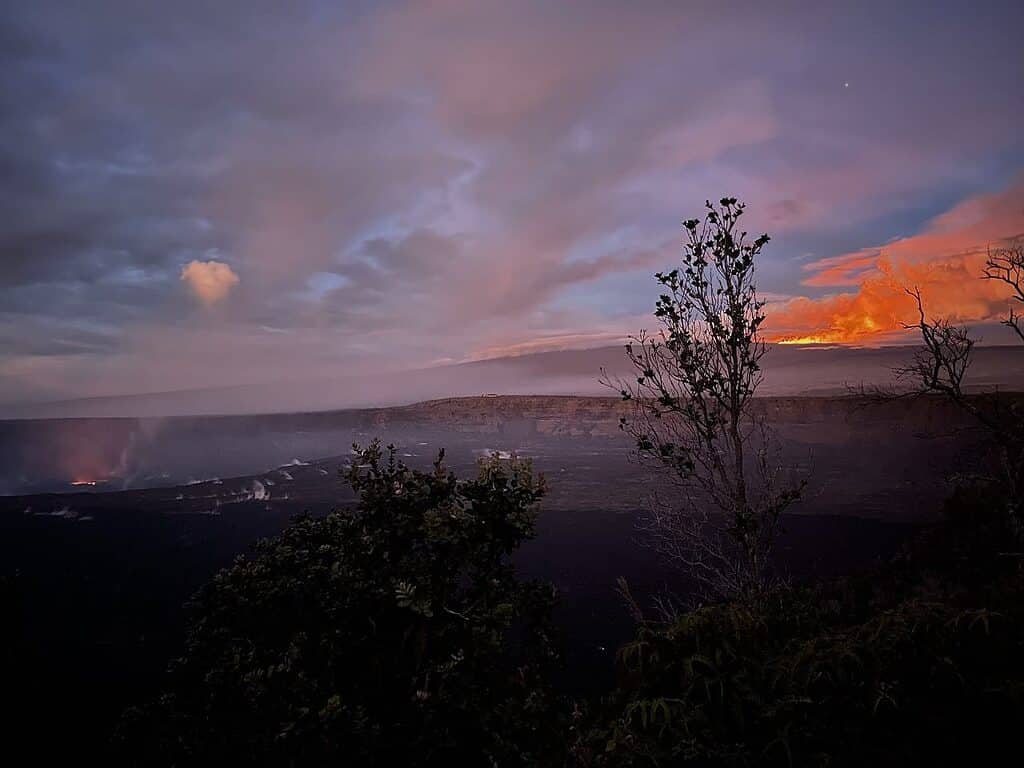
Mauna Loa, the largest active volcano in the world, has decided to wake up for the first time in nearly 40 years. The volcano began its eruption November 27 at 11.30 p.m. local time at Moku’weoweo, the summit’s caldera, situated inside Hawai’i Volcanoes National Park on the island of Hawaii. It’s the first time Mauna Loa has stretched its limbs since 1984.
According to the U.S. Geological Survey (USGS), the eruption has moved from the summit to the northeast rift zone, where fissures are feeding a number of lava flows. As a result, residents who may be at risk from Mauna Loa lava flows were advised to review their preparedness and consult information from Hawaii County Civil Defense for additional guidance.
“Right now, we just don’t know what’s going to happen – if this is going to stay as a summit-only eruption or move into one of the rift zones,” said Ken Hon at the Hawaiian Volcano Observatory in a briefing.
Residents of Hawaii’s Big Island who are medically vulnerable are advised to stay indoors or wear filter masks due to an ashfall warning. Although there is no immediate threat to populated areas, officials have opened shelters to provide safety for islanders.
Since 1843, the volcano has erupted 33 times, with the worst eruption occurring in 1950 when it flooded the coastal town of Hoploa within three hours, causing extensive damage to homes, a church, and a major highway. The U.S. military aircraft dropped bombs during the eruptions in 1935 and 1942 in an attempt—which was partially successful—to change the course of lava flows threatening the city of Hilo. In 1984, during its last eruption, lava flows approached within 5 miles of the same city.
Significant enough lava flows can be seen from Kona, hundreds of miles away. Due to its size, covering an area of roughly 3,106 square miles (5,000 square kilometers) and reaching a height of around 2.5 miles (4 kilometers), Mauna Loa occupies more than half of the Big Island.
When measured from its summit to the ocean floor, Mauna Loa has a volume of at least 18,000 square miles (75,000 square kilometers), making it the largest volcano in the world. Its base is located thirty thousand feet below the ocean, making it one thousand feet taller than Mount Everest. Around 13,000 feet of Mauna Loa is above sea level, but the rest of the mountain is submerged.
Initial lava flows from this volcano date back between 600,000 and 1,000,000 years. Scientists believe that Mauna Loa first poked its head above sea level around 300,000 years ago, and has been steadily expanding ever since.
No one can say nothing was in the works, however. The last month has seen a significant increase in volcanic activity at Mauna Loa, with dozens of small, shallow earthquakes recorded around the summit.
To assess the dangers posed by the ongoing eruption, the Hawaiian Volcano Observatory has issued a statement promising to conduct aerial reconnaissance “as soon as possible.”


